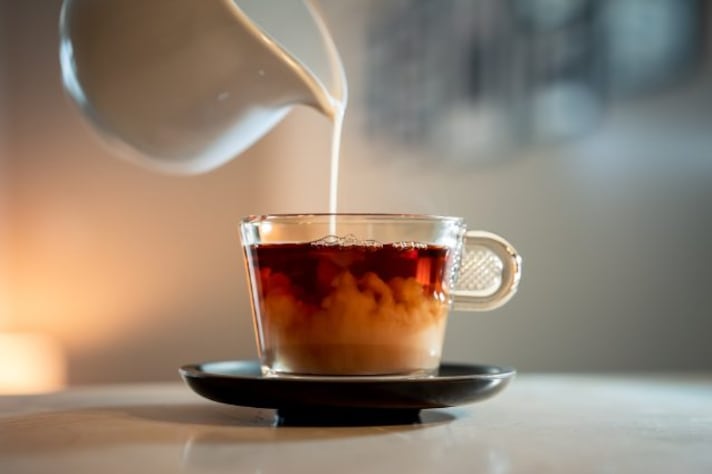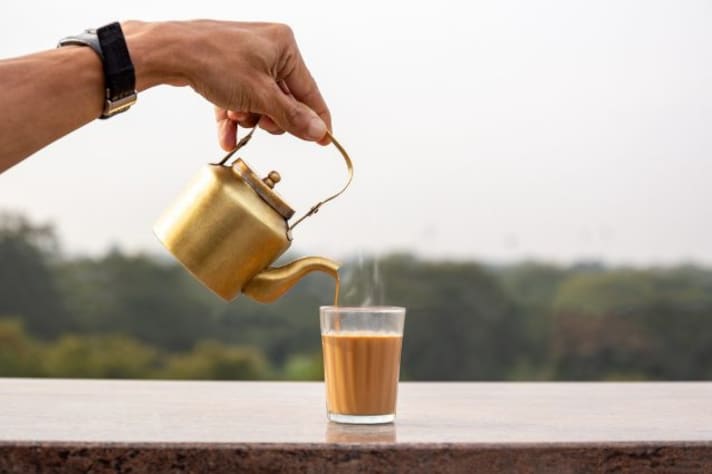Why Do We Add Milk to Tea? The Story Behind the Cuppa
Tea with milk: a comforting staple for many, yet a topic of heated debate for others. From its British origins to health benefits and brewing techniques, this classic combination has an interesting backstory worth exploring.

Tea with milk is a cherished tradition in many cultures, particularly in Britain, where the "cuppa" holds a special place in daily life. But have you ever wondered why milk is added to tea or how this practice began? Beyond tradition, adding milk affects the taste, texture, and even the nutritional profile of your tea. Let’s dive into the story behind this iconic pairing.
Why Do We Add Milk to Tea?
The addition of milk to tea is believed to have started in the 17th century. Porcelain teacups were delicate and prone to cracking when exposed to hot liquid. Milk was added first to cool the tea and protect the cups. Over time, this practice became a cultural norm in Britain and other tea-drinking regions.
In some Asian and Middle Eastern cultures, milk tea has taken on its own forms, such as masala chai in India or Hong Kong-style milk tea, blending tradition with local flavors.

Taste and Texture: What Does Milk Add to Tea?
Milk changes tea’s flavor and texture in notable ways. The proteins in milk bind to tannins in tea, softening the bitterness and creating a smoother taste. This is especially appreciated in strong black teas like Assam or English Breakfast, where milk balances the bold flavors.
The creaminess of milk also adds body to the tea, making it richer and more satisfying. However, the type of milk, whether whole, skimmed, or plant-based, can significantly alter the taste and texture of your brew.
Is Tea with Milk Healthy? Benefits and Drawbacks
Adding milk to tea has both benefits and drawbacks.
Benefits:
- Reduced bitterness: Milk makes tea more palatable for those sensitive to strong tannins.
- Nutritional boost: Dairy milk adds calcium, vitamin D, and protein to your drink.
Drawbacks:
- Reduced antioxidants: Some studies suggest milk proteins may bind to tea’s polyphenols, reducing their antioxidant properties.
- Caloric content: Adding milk increases the calorie count of your tea, especially if combined with sugar.
If you have dietary restrictions, consider plant-based milks like oat or almond. These provide a non-dairy alternative without compromising the creamy texture.

How to Brew the Perfect Tea with Milk
Achieving the perfect cup of tea with milk requires careful preparation. Here’s a simple guide:
- Choose your tea: Black teas like Assam, Earl Grey, or English Breakfast pair best with milk.
- Brew your tea: Use freshly boiled water and steep the tea for 3–5 minutes, depending on your desired strength.
- Add milk: Warm or cold milk can be added, but always pour it slowly to control the ratio. Some prefer to add milk first, while others add it last. Either method works—just ensure the balance suits your taste.
- Optional sweetener: If desired, add sugar, honey, or a sugar substitute to enhance the flavour.
Ultimately, tea with milk is more than just a beverage; it’s a tradition steeped in history and culture. Whether you drink it for the smooth taste, comforting warmth, or health benefits, this classic combination is a timeless favorite. So, next time you brew a cuppa, take a moment to appreciate the story behind it.
;Resize,width=767;)
;Resize,width=712;)

;Resize,width=712;)
